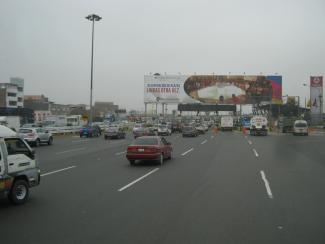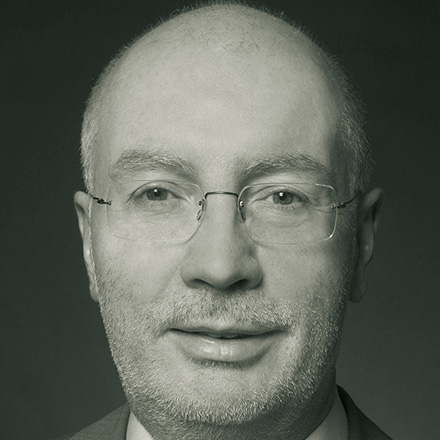Scholarship
Shades of green
 Dembowski
Dembowski
The terms “green growth and green economy” stand for reconciling business activities and expanding econonmies with nature. They have been on the agenda of policymakers as well as researchers in recent years, inspiring international debate in a time of financial crises and recession. The guiding idea is to fulfil the principle of sustainable development, which was accepted by the international community at the Earth Summit in Rio de Janeiro in 1992 and reaffirmed at the stock-taking conference Rio+20 last year. The goal is to eliminate poverty and to respect our planet’s environmental boundaries at the same time.
In the run-up to Rio+20, several developing countries embraced green strategies for economic development, and many others at least considered doing so. Costa Rica, Sri Lanka, Mauritius, Ghana and Bangladesh are among the many developing nations that take formal account of environmental matters in their national development plans. Rwanda and Ethiopia are considered African beacons, because they have incorporated aspects of green economy into their national growth strategies.
The desire for more environmentally sustainable policies in the developing world is reflected in the Bamako Declaration of African ministers at an AU conference in 2010 (quoted in UNEP 2011): “We will pay our part to spearhead the transition to a green economy in Africa (…) to ensure that green economies contribute to sustainable development and poverty reduction objectives.” Other global leaders have expressed similar optimism. But here are sceptics too. Some experts doubt that green growth can do much to reduce poverty. The core question is whether environmentally-friendly policies are beneficial or detrimental for the poor?
To answer this question one must first identify who the poor are, where they live, and how green-growth strategies will impact on their livelihoods. Extensive work by Andy Sumner (2012, 2012b) shows that the majority of the world’s poor no longer live in low-income countries, but instead in middle-income countries. The implications of green policies, however, are different in low-income and middle-income countries.
Most studies published by international organisations and donor agencies indicate considerable advantages of green-growth strategies for low-income countries. The UN Environment Programme (UNEP 2011) argues, for instance, that many least-developed countries (LDCs) stand to benefit. The essential reason is that their natural capital matters very much in economic activity and must not be compromised by environmentally destructive industries. Moreover, renewable energy solutions offer convincing options for rural electrification, which will contribute to raising people from misery. At the same time, the growth of the renewables sector will generate local jobs.
In line with such assessments, Ethiopia’s current Climate-Resilient Green-Economy Strategy aims to achieve the status of a middle-income country through renewable technologies and energy efficiency. Among other things, the strategy tackles issues such as rural electrification, improved agricultural productivity and forest protection. Feasibility will certainly depend on international policies on climate finance and carbon credits, but there can be no doubt that the strategy has a huge potential.
Ambiguous perspective
For middle-income countries and emerging markets things look different. Many of them experienced high growth rates based on carbon-intensive development in recent years. Much of their existing infrastructure is based on the use of fossil fuels. Accordingly, the transformation to a green economy will be costly in political and economic terms. Deteriorating environmental conditions will adversely affect many poor people of course, but so will rising costs for the energy-related services they rely on.
Green-growth strategies are therefore more ambiguous from poor people’s views in middle-income countries than in low-income countries. In regard to poverty, Holle Wlokas et al. (2012) argue that middle-income countries are better advised to focus on the mitigation of climate change rather than climate protection. Their assessment is based on several case studies.
Scholars and non-governmental organisations warn against adopting green-growth strategies in haste, without first analysing the implications diligently. There may indeed be considerable trade-offs between environmental sustainability and poverty reduction even in low-income countries. Danielle Resnick et al. (2012) have shown that green-growth policies can encourage countries like Malawi to redesign strategies in ways that may be inconsistent with their comparative advantages and current development pathways.
Resnick et al. refer to Malawi’s successful Agricultural Input Subsidy Programme (AISP) which has made a dent in rural poverty and significantly improved food security. The downside is that AISP leads to more greenhouse-gas emissions because it depends on chemical fertilisers. Malawi’s government must thus choose between a strategy that has proven successful and others that are more sustainable in the long run but do less to reduce poverty in the short run. Organic fertilisers are a viable alternative and so are intercropping and minimum tillage. However, these practices are not common in Malawi.
In contrast to many reports that point out that the poor will benefit from green policies, Stefan Dercon (2012) argues in rather general terms that the poor are likely to suffer. According to conventional development theory, economic growth results from a structural transformation in which agriculture becomes less important as other sectors that yield higher returns thrive. Dercon emphasises, however, that the new industries must be labour intensive for poor people to benefit from that transformation. He warns that green-growth policies will not improve poor people’s livelihoods because they will fail to absorb surplus labour from rural areas if they rely on capital-intensive technologies and high-skill employment.
Research of this kind indicates that green growth is certainly not a panacea. Policy implications must be assessed carefully in every single case. It makes sense to consider varying shades of green and let countries tailor their own strategies according to their specific needs.
The way forward
Evidently, there is a need for more research on the matter. We need a better understanding of the local impacts of green-growth strategies, and must assess the trade-offs between short-term and long-term effects. Most of the current literature is based on stylized facts, so more empirical evidence is required to design good policies for developing countries.
This year’s annual PEGNet conference will focus on these questions in Copenhagen on 17 and 18 October. PEGNet is a network that links research institutions, policymakers and development agencies at an international level. Its sponsors include Germany’s Federal Ministry for Economic Cooperation and Development, the agencies GIZ and KFW as well as the Kiel Institute for the World Economy and Göttingen University. This year’s event will be hosted in cooperation with the Department of Economics at the University of Copenhagen. An innovative addition will be a “speedmatching session” that will put non-governmental organisations in touch with development researchers, government agencies and policy makers.
Linda Kleemann is postdoctoral researcher at the Kiel Institute for the World Economy and managing director of PEGNet.
linda.kleemann@ifw-kiel.de
Kacana Sipangule is doctoral student at the University of Göttingen and a researcher at the Kiel Institute for World Economy as well as GIGA German Institute for Global Area Studies. She is responsible for coordinating the conference activities at PEGNet.
kacana.sipangule@ifw-kiel.de
Pablo Selaya is associate professor at the Department of Economics
at the University of Copenhagen and visiting scholar at Harvard University.
pablo.selaya@econ.ku.dk

